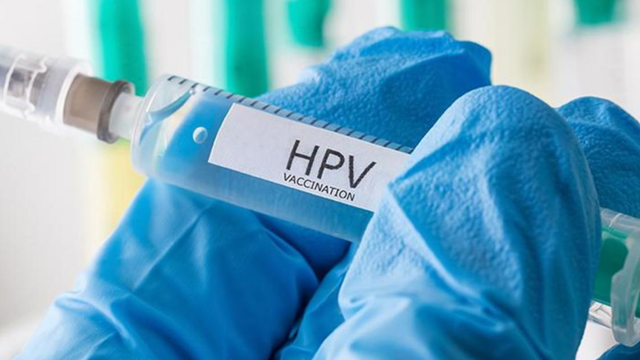November 18, 2025 : Cervical cancer remains one of the most preventable yet deadly cancers affecting women worldwide. With the development of effective vaccines, reliable screening tools and improved treatment protocols, global health agencies now believe that cervical cancer can be eliminated as a public health problem. The World Health Organization (WHO) has already initiated a global strategy to achieve elimination within the coming decades.
This article explores the elimination goal, the strategies recommended, and the progress made so far.
THE GOAL: WHAT DOES “ELIMINATION” MEAN?
WHO aims to reduce cervical cancer incidence to fewer than 4 cases per 100,000 women per year. This threshold is considered the point at which cervical cancer is no longer a major public health burden.
To reach this, the WHO has established the 90-70-90 targets by 2030:
1. 90% of girls fully vaccinated against HPV by age 15
Human papillomavirus (HPV) is responsible for nearly all cervical cancer cases. The vaccine is one of the most effective cancer-preventing measures in medical history.
2. 70% of women screened at least twice in their lifetime
Screening at ages 35 and 45 using high-performance tests—particularly HPV DNA testing—can detect pre-cancer early.
3. 90% of women with cervical disease receive treatment
This includes:
- Treatment for precancerous lesions
- Timely management for invasive cervical cancer
- Access to palliative care when needed
If countries meet these milestones, models show that millions of lives can be saved this century.
WHY THIS MATTERS
- Cervical cancer is the fourth most common cancer among women globally.
- It disproportionately affects women in low- and middle-income countries.
- Most deaths occur due to lack of vaccination, screening, and treatment access.
- Unlike many cancers, cervical cancer is almost entirely preventable.
STRATEGIES FOR ELIMINATION
1. HPV Vaccination
The backbone of prevention, the HPV vaccine is safe, highly effective and recommended for:
- Girls aged 9–14
- In some countries, boys are also included to reduce transmission
Countries adopting single-dose HPV vaccination schedules are achieving higher coverage with reduced cost and logistics challenges.
2. Screening and Early Detection
Effective screening can identify high-risk changes long before they become cancer.
Preferred screening tools include:
- HPV DNA testing (most accurate)
- VIA (Visual Inspection with Acetic Acid) in low-resource settings
- Pap smear where infrastructure exists
Regular screening ensures pre-cancerous lesions are treated promptly.
3. Early Treatment and Quality Care
This involves:
- Cryotherapy
- Thermal ablation
- LEEP (Loop Electrosurgical Excision Procedure)
- Surgery, radiotherapy and chemotherapy for advanced cancer
Strengthening healthcare systems is key to providing these services at scale.
4. Public Awareness and Community Engagement
Educating communities helps:
- Combat stigma and misinformation
- Increase vaccination rates
- Encourage women to undergo screening
- Support timely treatment seeking
Awareness campaigns through schools, social media, and healthcare workers are crucial.
5. Strengthening Health Systems
Countries are working on:
- Workforce training
- Building screening infrastructure
- Ensuring affordable HPV vaccines
- Improving data systems for monitoring progress
ACTIONS TAKEN GLOBALLY
1. WHO’s Global Strategy (Launched in 2020)
World-wide commitment to achieving the 90-70-90 targets.
2. National Vaccination Programs
Over 125 countries have introduced HPV vaccination in their national immunization schedules.
3. Single-dose HPV vaccine endorsement
New evidence allows easier implementation and increased coverage.
4. Global partnerships
UN agencies, NGOs, research institutes, and governments are collaborating to scale screening and treatment.
5. Investment in low-resource settings
Pilot projects across Africa and Asia are improving screening access using mobile clinics and self-collection HPV testing kits.
6. Digital health tools
Countries use AI-assisted screening, telemedicine, and digital registries to track patients and ensure follow-up.
ACTIONS TAKEN IN INDIA (Brief Overview)
- India launched the cervical cancer elimination initiative focusing on HPV vaccination and expanded screening.
- Several states have begun public HPV vaccination programs for girls.
- The Government recommends screening for women aged 30–65 at least once every five years.
- India has also increased availability of VIA screening in primary health centers.
THE ROAD AHEAD
Eliminating cervical cancer is achievable, but progress depends on:
- Political commitment
- Affordability and supply of vaccines
- Consistent screening coverage
- Trained healthcare workers
- Strong community awareness
If current efforts continue, experts estimate that future generations could live in a world where cervical cancer is no longer a threat.
SUMMARY
Cervical cancer can be eliminated by meeting WHO’s 90-70-90 goals: broad HPV vaccination, regular screening, and accessible treatment. Global and national actions are accelerating progress toward a cervical cancer-free future.


